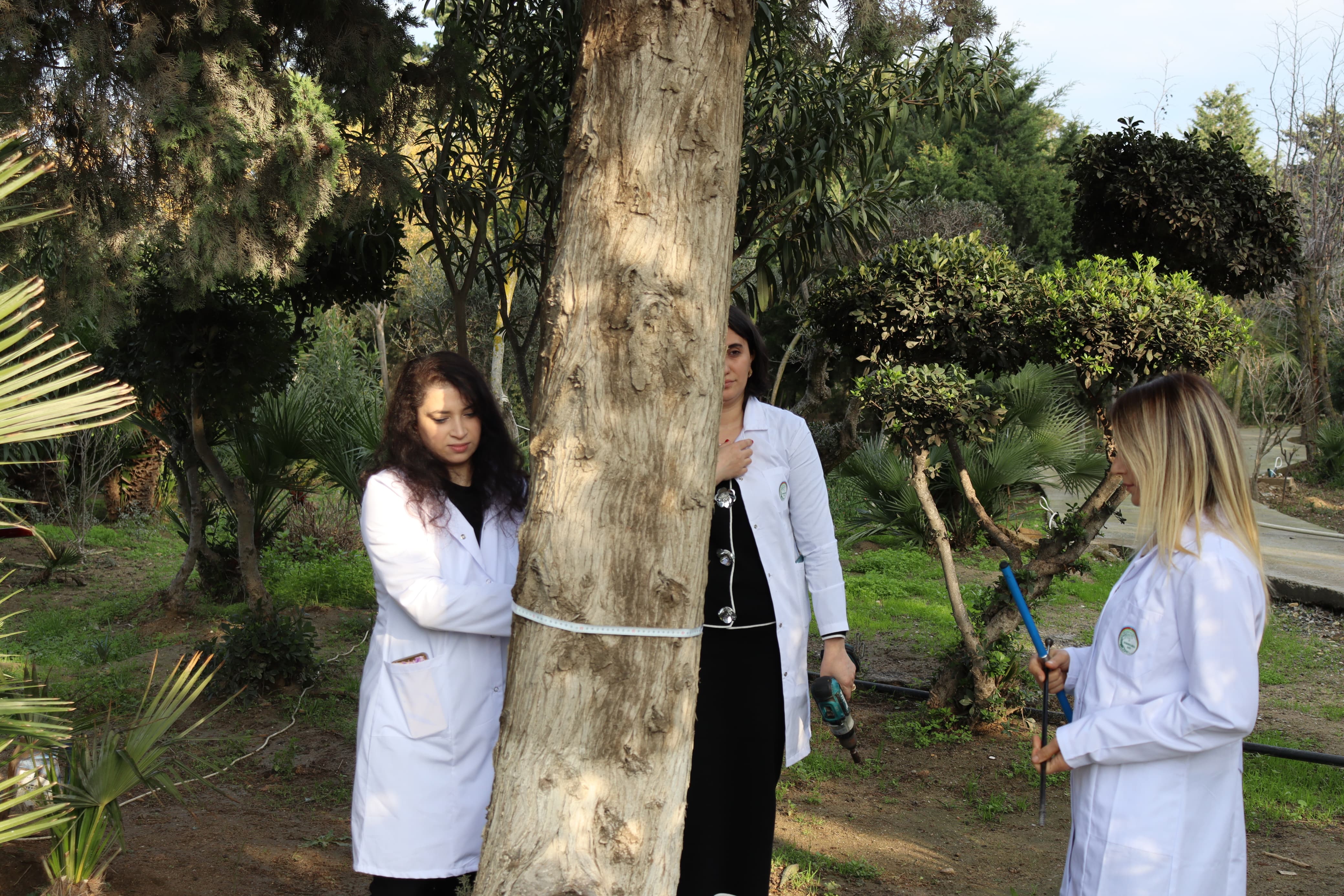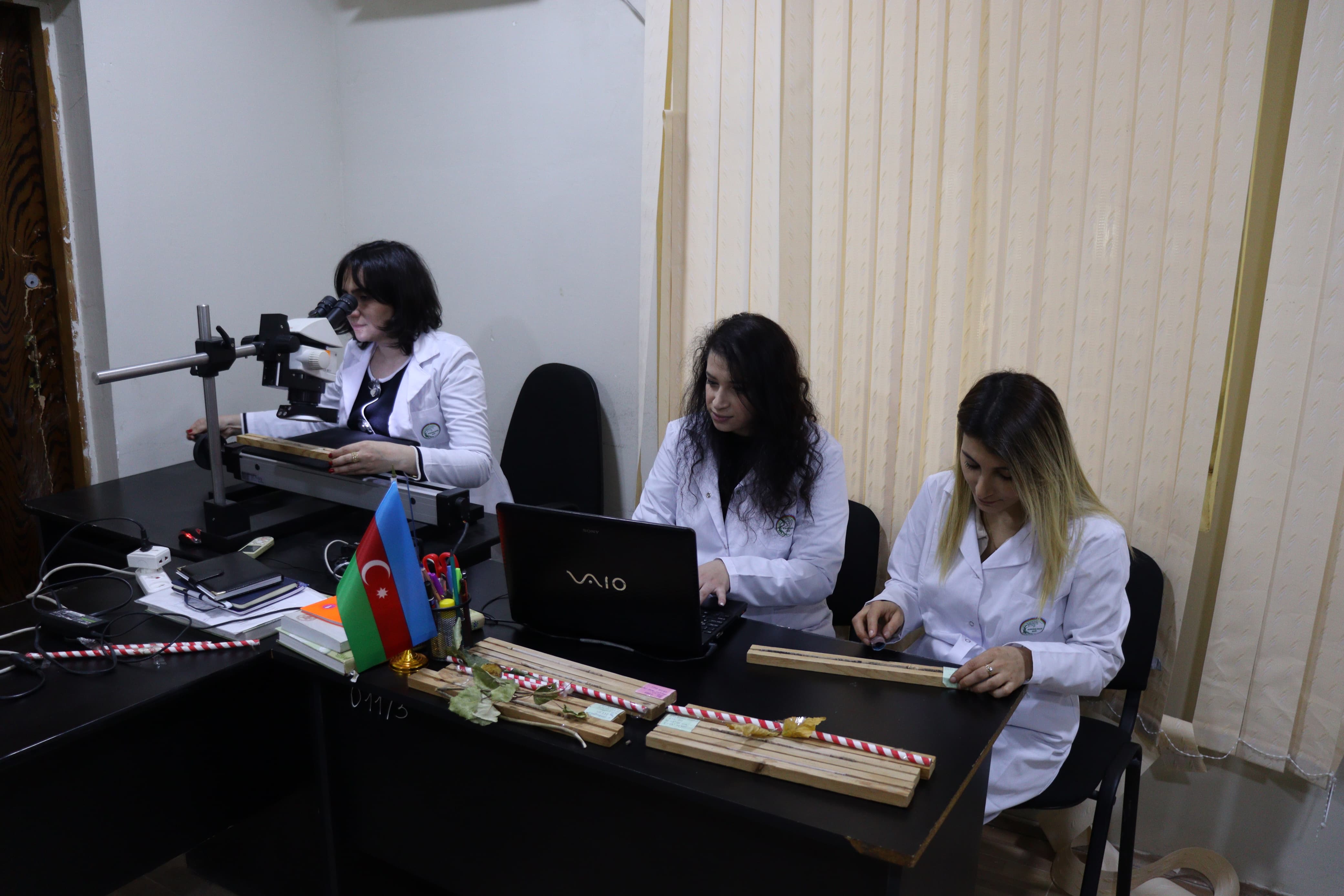Dendrochronological researches were conducted on the southern slopes of the Greater Caucasus by staff of the “Dendrochronology” Laboratory of the “Dendrology Garden” Public Legal Entity
Dendrochronological analysis of samples taken from the southern slopes of the Greater Caucasus (Faqus orientalis Lipsky., Quercus iberica Steven. and Carpinus betulus L.), Shahdag National Park (Betula pendula Roth., Faqus orientalis Lipsky.), Hirkan National Park (Quercus castanefolia C.A.Mey.) and the territory of the garden (Pinus eldarica Medw., Cupressus sempervirens Mill.) was conducted by staff of the “Dendrochronology” Laboratory of the under the authority of the Head of the Executive Power of Baku City “Dendrochronology Garden” Public Legal Entity.
The basic aim of conducting dendrochronological analysis is to study the relationship of the tree trunk with the external environment, the variability of wood over the years, the impact of events that occurred on them depending on environmental factors, and its age on a scientific basis. For this purpose, samples are taken from the trunks of the studied species (4-6 samples of each species), their age is determined, absolute and relative indicator graphs of factors affecting biological development are constructed over the years. This allows us to determine the sequential progress dynamics of the plant over the years, as well as sustainability criteria.
During the investigation, dendrochronological equipment “LINTAB6” and “Resistograph” and a Suuntu drill are used.
The application of “LINTAB6” allows us to obtain information about the variability of the annual rings of the tree and use it for dendrochronological analysis. In dendrochronology operations are performed during the diagnostic process with a “Resistograph” – a thin drill (digger) needle with a diameter of 1.5 millimeters and a length of 50 centimeters.










